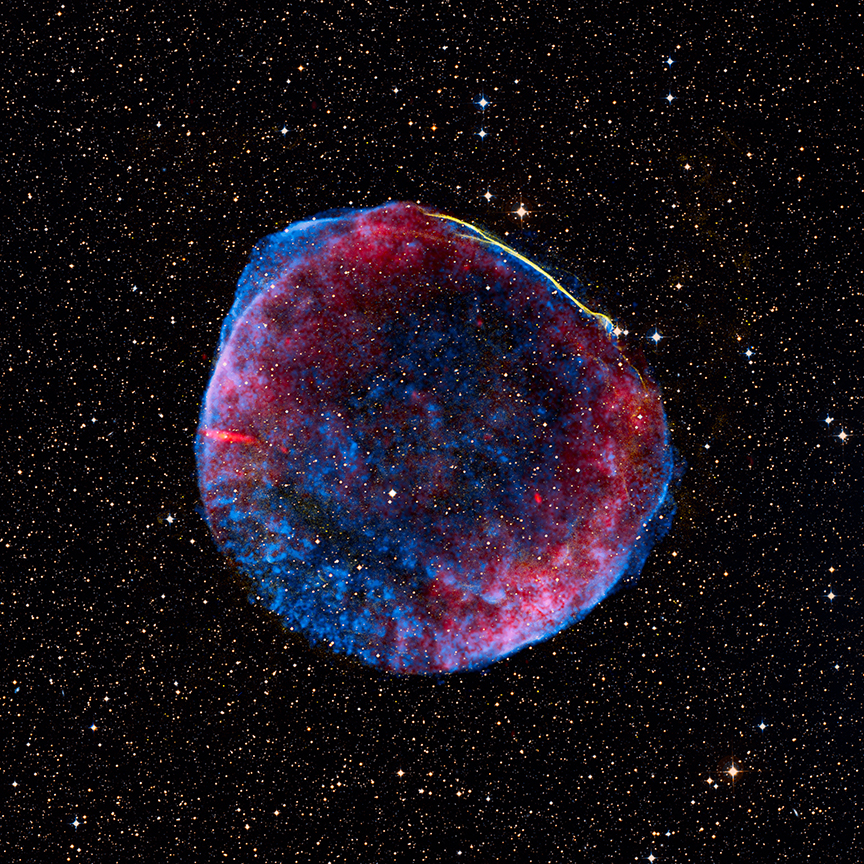
Posted on 08/01/2009 8:25:48 AM PDT by paul in cape
SN 1006 Supernova Remnant
Explanation: A new star, likely the brightest supernova in recorded human history, lit up planet Earth's sky in the year 1006 AD. The expanding debris cloud from the stellar explosion, found in the southerly constellation of Lupus, still puts on a cosmic light show across the electromagnetic spectrum. In fact, this composite view includes X-ray data in blue from the Chandra Observatory, optical data in yellowish hues, and radio image data in red.
Now known as the SN 1006 supernova remnant, the debris cloud appears to be about 60 light-years across and is understood to represent the remains of a white dwarf star. Part of a binary star system, the compact white dwarf gradually captured material from its companion star.
The buildup in mass finally triggered a thermonuclear explosion that destroyed the dwarf star. Because the distance to the supernova remnant is about 7,000 light-years, that explosion actually happened 7,000 years before the light reached Earth in 1006.
Shockwaves in the remnant accelerate particles to extreme energies and are thought to be a source of the mysterious cosmic rays.

Jor-El and Lara Lor-Van put their baby in that rocket just in time!
I get my desktop pics from that site. Great stuff!
Way cool Picture thank you for posting it!
It kinda looks like a face :)

"I see meow mix"

This is what I thought of....
It looks like Charlie Brown.

It was seen on earth in A.D. 1006, but it is 7000 light-years distant, so the actual supernova was in 5993 B.C. (not 5994, because there was no Year Zero).
Photon torpedoe?
Disclaimer: Opinions posted on Free Republic are those of the individual posters and do not necessarily represent the opinion of Free Republic or its management. All materials posted herein are protected by copyright law and the exemption for fair use of copyrighted works.